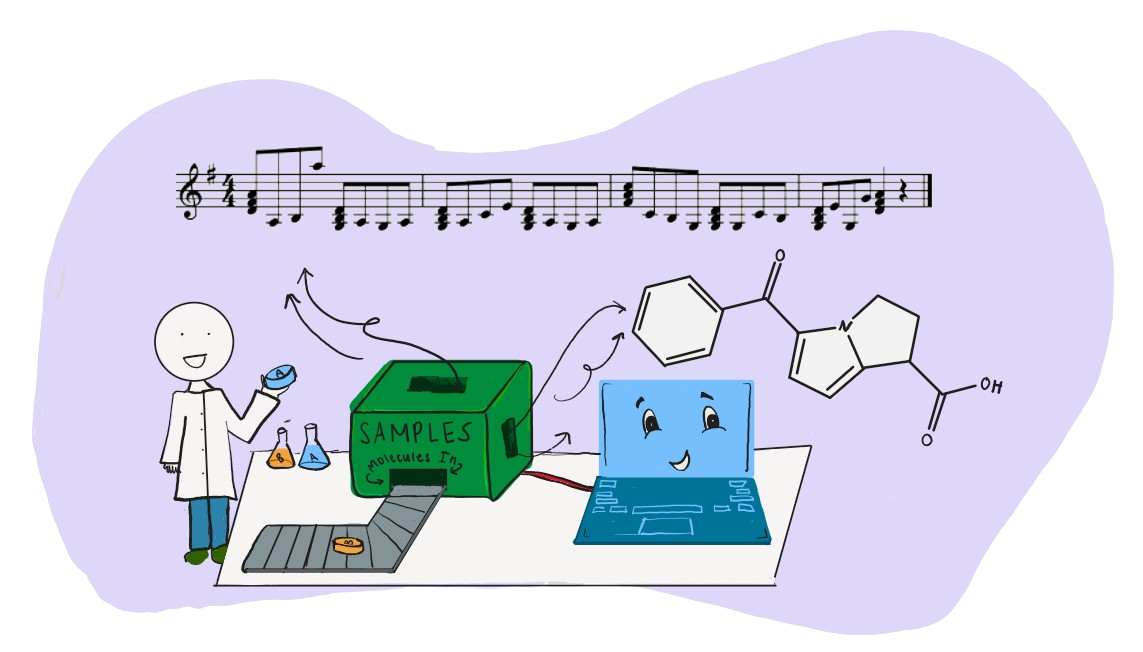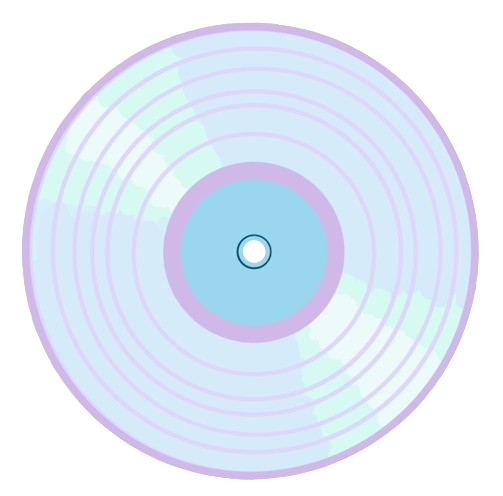
Molecules to Music: Music as a Medium of Structure Representation in Chemistry
WRITTEN BY SINCLAIR WILLIAMS
ILLUSTRATED BY CASSANDRA CHANG & CHARLOTTE CHANG
What if molecules could be represented not only through their chemical structure on a page or screen, but could be heard as a musical composition, where the properties of chemistry intertwine with the melodies of music? Traditionally, chemical structure has been depicted through line drawings or computational graphs, serving as the language of chemistry. Yet in an emerging exploration study, researchers from the University of Michigan have designed a novel medium and dimension of the chemical language by translating molecular arrangements into musical notes. This musical medium, known as Sonic Architecture for Molecular Production and Live-Input Encoding Software (SAMPLES), introduces a dynamic way to perceive molecules.

In chemistry, complex molecular arrangements are visualized through line structures, which can quickly give information about their characteristics. For ease of computational analysis, these visual representations have been encoded into machine-readable formats such as simplified molecular-input line-entry system (SMILES) and SMILES arbitrary target specification (SMARTS), translating molecular structure representations to long sequences of numbers and letters. These one-dimensional string representations can be further converted and used to investigate virtual chemical libraries or predict chemical properties. Although these formats are easy to parse and use to encode information for computers, human interpretation and interactivity are difficult with these coded formats compared to visual line drawings. Furthermore, these files cannot typically be reverted back to their line structure representations accurately.
Research led by Babak Mahjour at the University of Michigan has found that none other than music can be a format of chemical structure interpretation that both computers and humans can understand and interact with. Unlike other mediums such as one-dimensional strings, music is distinct in that it contains multiple dimensions: characteristics such as key, notes, rhythm, and tempo can be used to contain and encode different molecular properties. In this way, a molecule can be rendered as a short melody or song that can be understood by computers and humans alike!

This musical method, known as SAMPLES, is designed so that structural and molecular properties are encoded by the musical key, the tonal framework that dictates the notes used in the composition, and stored as a musical composition. To determine the key of the composition, the physiochemical properties such as logP, molecular weight, and number of hydrogen bond donors/acceptors are summed. The atom and bond arrangement of the molecule is stored as the melody, or the arrangement of notes of the composition, derived from the one-dimensional string representation of letters and digits. This musical composition can then be accurately decoded back to its visual structure representation, which was not typical for the previous one-dimensional codes. SAMPLES code also allows for direct editing of the music generated by molecules using a piano keyboard or other music hardware and software, allowing people to interact with and edit molecular structures through note editing.
Together, SAMPLES can be used to successfully encode and decode complex molecules into beautiful music as a means of structural representation. Decoding molecular structure from its musical composition opens a potential avenue for music-based artificial intelligence in molecular design. SAMPLES is a novel innovation bringing a visual-to-audio sensory substitution for molecular interpretation to study molecular design, furthering the development of artificial intelligence in chemistry.

Want to hear what some of these molecules sound like? Listen for yourself to actual musical molecule codes from the researchers who designed this innovation!
References
- Mahjour, B.; Bench, J.; Zhang, R.; Frazier, J.; Cernak, T. Molecular Sonification for Molecule to Music Information Transfer. ChemRxiv 2022. https://doi.org/10.26434/chemrxiv-2022-g7xkl.
